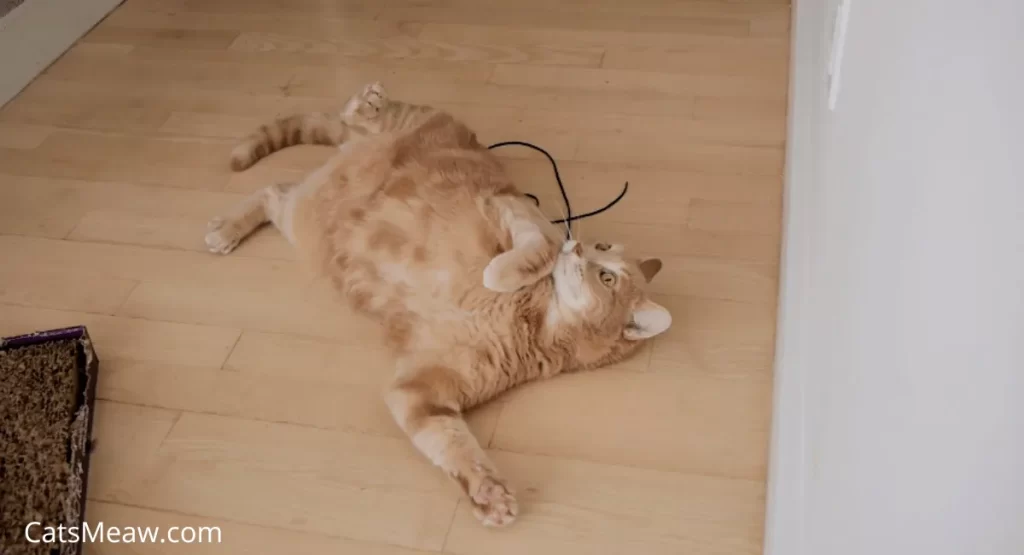Have you ever caught your cat rolling on its back, paws in the air, and wondered what they’re trying to tell you? While this behavior can seem random, it’s actually a form of communication packed with meaning. From seeking attention to marking their territory, cats use rolling as a multifaceted tool for interaction and self-care.

Understanding these behaviors isn’t just fascinating; it helps strengthen the bond between you and your furry companion. In this guide, we’ll uncover the shared and unique reasons behind cat rolling and explain how you can respond in ways that make your cat feel loved and secure.
Table of contents
Common Reasons Why Do Cats Roll on Their Backs
Trust and Safety
Cats rarely expose their vulnerable belly unless they feel completely safe. Rolling onto their back is a sign of trust, signaling they’re relaxed and comfortable. Whether it’s in their favorite sunlit spot or right in front of you, this gesture often says, “I trust you.” For instance, if your cat rolls over when you walk in the door, it’s their way of welcoming you home and showing affection. Think of this behavior as a feline “hello.”
Attention-Seeking Behavior
Rolling can also be a clever way for your cat to grab your attention. Cats are highly social animals, and when they want to play or interact, they may roll in front of you while purring or meowing. Do you notice your cat doing this in the mornings or when you’re busy? They might be reminding you it’s time for some quality bonding—whether it’s a belly rub or chasing a feather toy. Learn more about fostering playful behaviors in interactive cat toys.
Practical Needs
Sometimes, rolling serves a simple physical purpose. Cats use this motion to scratch an itch on their back or to stretch out stiff muscles after a nap. Much like humans stretch after sitting too long, rolling keeps your cat limber and comfortable.
Unique Instincts Driving Cat Rolling
Marking Territory
Cats communicate through scent, and rolling on surfaces is one way they claim their space. Using the scent glands on their cheeks, paws, and flanks, they leave behind a distinct odor that signals ownership. If your cat rolls on your feet or a favorite spot on the carpet, they’re marking it as theirs. Learn more about this behavior in territorial instincts in cats.
Mating Behavior
Unspayed female cats often roll when they’re in heat. This behavior, tied to hormones, helps them signal their availability to potential mates. Similarly, catnip can induce rolling in both male and female cats due to its active compound, nepetalactone, which mimics feline pheromones. To understand how hormonal changes affect behavior, read more about cats in heat.
What Rolling Doesn’t Mean: A Clarification
Unlike dogs, cats don’t roll as a submissive gesture. While dogs may roll onto their backs to show deference, cats use this position for entirely different reasons—usually tied to trust or self-expression. So, if your cat rolls, don’t assume they’re asking for a tummy rub. In fact, many cats may swat if you touch their sensitive belly.
Environmental Factors Behind Rolling
Sunbathing and Cooling
Cats are natural sun-lovers, often rolling on their backs in sunlit spots to soak in warmth. Conversely, rolling on cool surfaces like tiles or shaded floors helps them regulate their body temperature. Check out some tips on how to create cat-friendly spaces.
Digestive Health
Some experts suggest that cats may roll in dirt to coat their fur with beneficial bacteria. When they groom themselves later, these microbes are ingested, potentially aiding in digestion. This behavior mimics instincts seen in wild felines.
Building Stronger Bonds Through Understanding
Decoding your cat’s rolling behavior is about observing their context and cues. Responding appropriately, whether by engaging in play or giving them space, reinforces trust and strengthens your bond. If rolling is tied to marking or attention-seeking, a simple act like offering a toy can keep them engaged and happy. For a list of must-have essentials for your furry friend, visit new kitten checklists.
FAQs
1. why do cats roll on their backs? but swat when I touch their bellies?
Rolling doesn’t always mean an invitation for belly rubs. Cats are protective of their sensitive underside.
2. Do all cats roll in catnip?
Not all cats respond to catnip. Sensitivity to its effects is genetic and affects about 70% of cats.
3. Why does my cat roll after I come home?
This is likely a greeting behavior, showing trust and excitement to see you.
4. Is rolling always a sign of happiness?
Not always. While it often indicates relaxation or trust, cats may also roll to scratch, stretch, or mark territory.
5. How can I encourage more interactive rolling behaviors?
Positive reinforcement through play or affection when your cat rolls can make the behavior a recurring bonding ritual.
By understanding the reasons behind your cat’s rolling habits, you can respond in ways that strengthen your relationship while ensuring your furry friend feels happy and secure.
